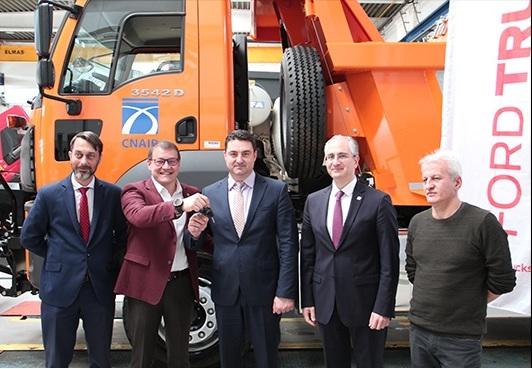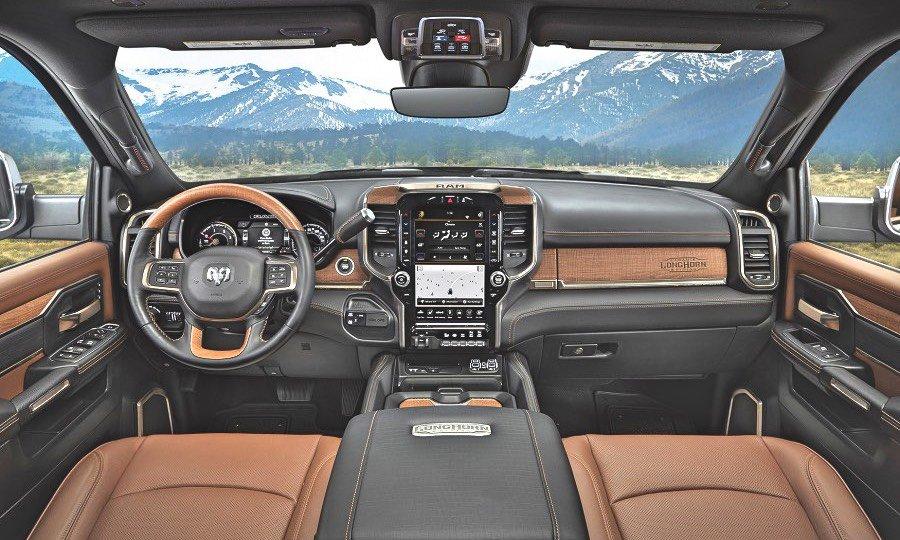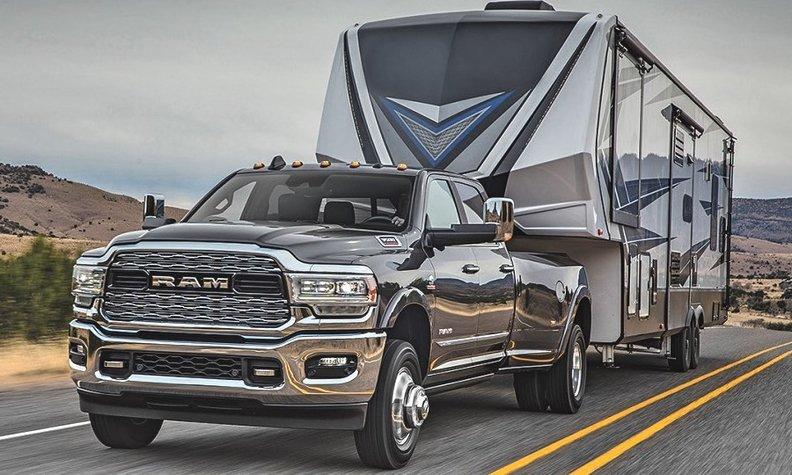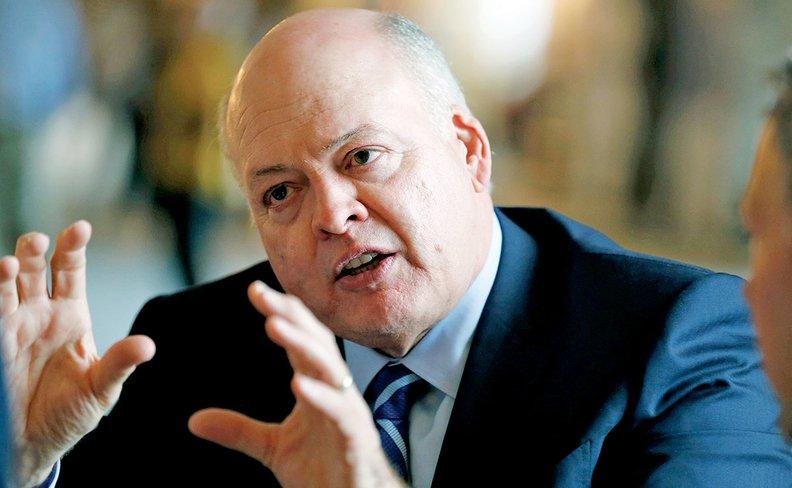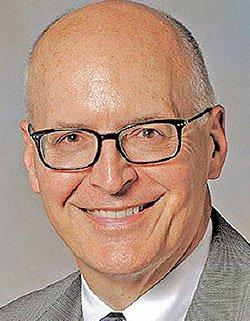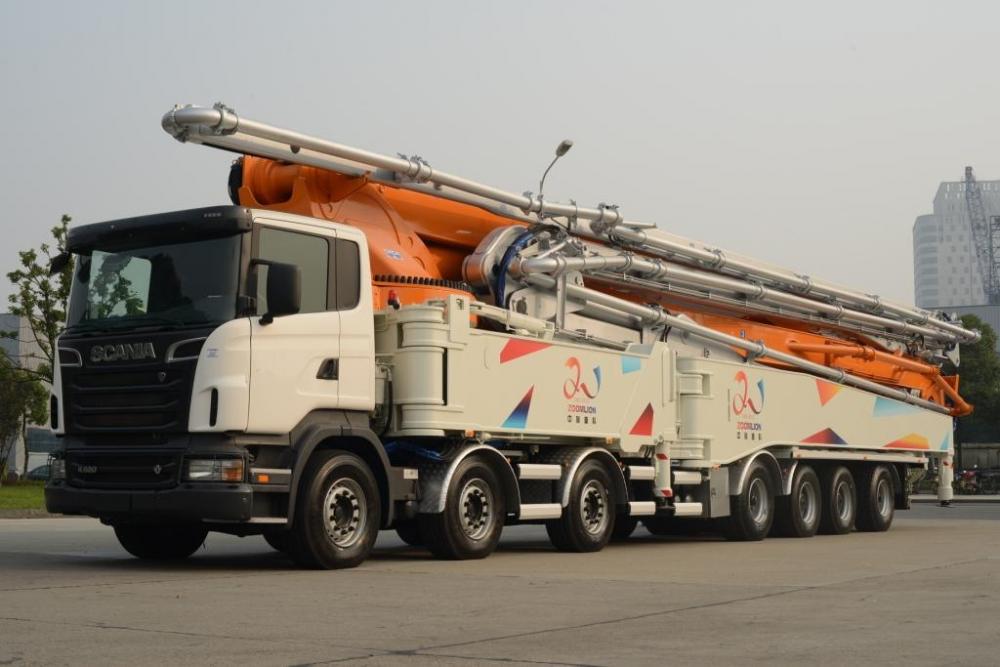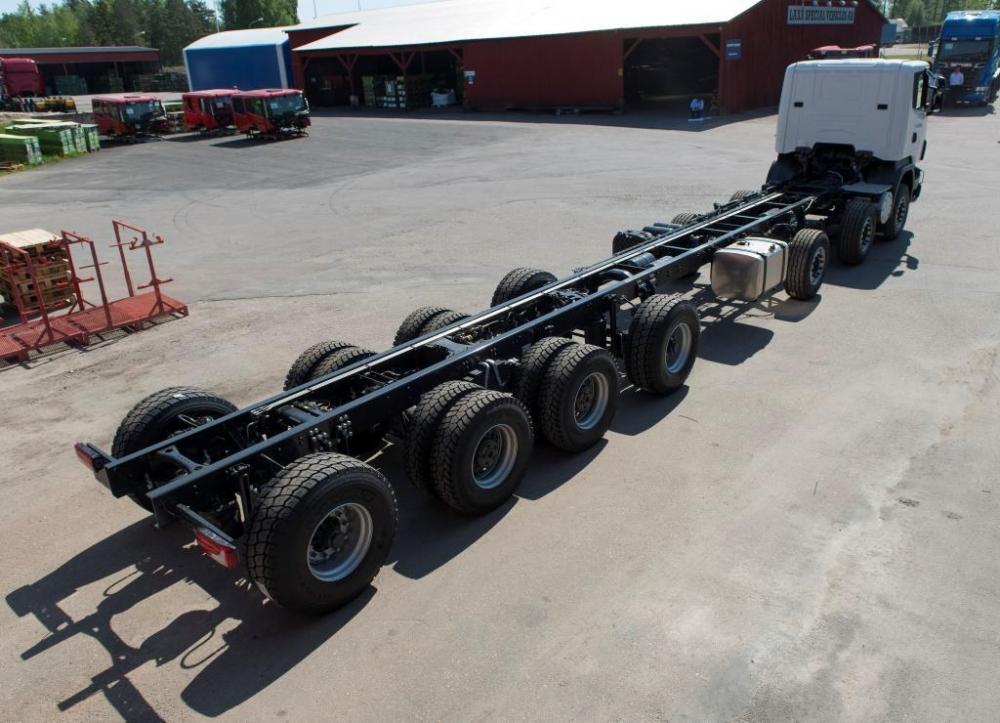
kscarbel2
Moderator-
Posts
18,547 -
Joined
-
Days Won
112
Content Type
Profiles
Forums
Gallery
Events
Blogs
BMT Wiki
Collections
Store
Everything posted by kscarbel2
-
Ford Trucks International / November 29, 2018 Ford Trucks, one of the largest international heavy truck manufacturers in the world, recently announced that it has selected F Trucks as the official dealer for Ford Trucks Heavy Commercial Vehicles in Czech Republic. F Trucks is a joint venture company of Auto In and Kar Group. The company will provide sales, after sales and spare parts to Ford Trucks customers in Prague. Ford Trucks will also continue to expand its network through F Trucks' 5 additional locations in Czech Republic by 2018 Auto In has been representing world leading automotive brands for more than 15 years and is one of the largest Ford dealers in Czech Republic. Kar Group runs a wide range of businesses including, logistics, parts distribution and Trucks & Bus services. This new partnership was announced and celebrated during a press event at the Corinthia Hotel Prague. The event was attended by Milos Pavlicek and Tomas Vratny the founders of Auto In and Kar Group, Vice President of Ford Trucks, Serhan Turfan, Director of International Markets at Ford Trucks, Emrah Duman, executives from Ford Trucks, Auto In and Kar Group and other prominent guests. Director of International Markets at Ford Trucks, Emrah Duman, said: “Since our 1st contact with two professional business groups, we understood that both sides share the same vision in business and will be good partners to each other in the future. We are very pleased to partner with F Trucks to launch our range of heavy commercial vehicles for the first time in Czech Republic. They are now expanding their successful Ford business with Ford Trucks distributorship, to serve our customers with a wide range of products from passenger cars to heavy commercial vehicles. With our new partner, F Trucks, we are committed to provide the highest levels of customer service and competitive after-sales solutions through dedicated facilities for sales, service and parts. I believe F Trucks will represent our brand in the best possible way in Czech Republic.” E6 Ecotorq Engine, the source of power, technology and efficiency in Ford Trucks: Improvement in fuel economy; higher performance with up to 480 PS power The new Ford Trucks series offers a range of power options from 330 to 480 PS with E6 emissions. The latest Ecotorq engines deliver better fuel economy than previous versions and are the most competitive in the segment, according to tests conducted by independent bodies — while increasing both the torque and power for performance in all conditions. The new Ford Trucks models have improved power but also braking force, with a braking system that is seven times stronger than in the previous generation. The retarder option and engine brake provide 600kW and 400kW of braking force respectively, for a total braking output of 1.000kW. With these new features, the new generation of Ford trucks provide greater reliability and safety. All vehicles are also offered with 10mm, 500-megapascal chassis frames that further improve the durability of the vehicle. The new Ford Trucks models also yield savings after purchase. Maintenance costs have been reduced, while service periods have been extended to reduce the scheduled downtime and provide a further competitive advantage for Ford customers in the logistics and construction sectors. The service periods extended to 120,000 km, offered for the Tractor and Construction series will allow the customers to have the most competitive maintenance advantage in the logistics and construction sectors. .
-
Bob, if I remember correctly, that covers the hitch while the plow is removed for the summer months. It's functional from a safety standpoint, and aesthetically appealing.
-
Ford Trucks International The advanced 12.7-litre Ecotorq engine at the heart of the Ford Trucks "Construction Series" will impress you with its superb balance of performance and fuel economy! .
-
-
Transport Topics / January 29, 2019 Global Deliveries Also Set New High Paccar Inc. reported record revenue in the fourth quarter and, excluding one-time benefits, higher net income. Annual revenue and net income set records, too, as it delivered 189,100 vehicles worldwide in 2018. Quarterly net income for the period ended Dec. 31 was $578.1 million, or $1.65 per diluted share. That compared with $589.2 million, or $1.67, in the fourth quarter of 2017, including $173.4 million of net tax benefits resulting from changes to U.S. tax law. Excluding the one-time tax benefits, Paccar reported adjusted net income of $415.8 million, or $1.18, in the fourth quarter of 2017. Quarterly revenue was a record $6.28 billion, a 15% increase compared with $5.45 billion reported in the same period in 2017. “The North American and European economies are projected to continue growing in 2019,” CEO Ron Armstrong said in a release. “Our customers are very profitable and benefiting from strong freight demand. Freight activity grew 6.6% in the U.S. in 2018, the highest growth in 20 years. Kenworth and Peterbilt’s 2019 build schedules are substantially full due to the robust orders. We expect 2019 to be another excellent year for Paccar.” The original equipment manufacturer also posted record quarterly worldwide deliveries of 50,400 trucks. Parts revenue of $970.9 million in the quarter was a record. For the full year, Paccar earned record net income of $2.20 billion, or $6.24 per diluted share, 31% higher than the $1.68 billion, or $4.75, earned in 2017. Paccar’s 2018 net income of $2.20 billion increased 47% compared with 2017 adjusted net income (non-GAAP) of $1.5 billion, or $4.26. Paccar achieved record revenue of $23.50 billion in 2018, a 21% increase compared to revenue of $19.46 billion in 2017.
-
I hear you. Plows are becoming obsolete except for heavy snowfall areas like Scandinavia. Rotary brooms have become the global standard in Western Europe and Northern China.
-
Owning a Peterbilt - The Features & Benefits
kscarbel2 replied to kscarbel2's topic in Trucking News
No. It’s a DAF LF market-adapted for North America. The Volkswagen Worker-based Mid-Rangers were nice trucks. -
NYC is following London on visibility requirements.
-
Peterbilt Motors Co. / January 28, 2019 . . . .
-
COEs perform splendidly in the snow removal application. .
-
No, the 3542D is exclusively a Ford-Otosan model Bob. http://www.fordtrucks.com.gh/Content/Resources/Vehicle/3542D.pdf https://www.fordcaminhoes.com.br/content/ford-brazil-trucks/pt-br/cargo.html
-
Commercial Carrier Journal (CCJ) / January 28, 2019 The Federal Motor Carrier Safety Administration has expanded its regional emergency declaration from Jan. 18 to now include 23 states ahead of a winter storm expected to impact much of the Eastern U.S. this week. Truck drivers hauling heating fuels, including propane, natural gas, and heating oil, and other fuel products, including gasoline, into the affected states providing necessary relief will be exempt from hours of service regulations through Feb. 2, or until the end of the emergency, whichever is less. States included in the declaration are: Connecticut, Illinois, Indiana, Iowa, Kansas, Kentucky, Maine, Massachusetts, Michigan, Minnesota, Missouri, Mississippi, Nebraska, New Hampshire, New Jersey, New York, Ohio, Pennsylvania, Rhode Island, Tennessee, Vermont and Wisconsin. Additionally, Alabama Gov. Kay Ivey issued a declaration of emergency Monday afternoon in anticipation of the incoming winter storm, prompting an hours suspension throughout the state for truckers providing direct emergency relief to affected areas. The Indiana Toll Road issued a travel ban from noon today through noon Tuesday. Prohibited are triple tractor-trailers, long-doubles (high-profile only), high-profile oversize permit loads. Snow is expected to spread through the Ohio Valley and into the Northeast Monday night and Tuesday, extending as far south as Alabama, Mississippi and Georgia. Travel conditions are expected to deteriorate throughout the day Tuesday in the affected areas. In addition to the precipitation, extreme cold is another concern, according to the Weather Channel. By mid-week, cities in the Midwest, such as Minneapolis, Des Moines, Chicago and Milwaukee, could see lows in the minus teens and minus 20s. Sub-zero lows could also extend through the Ohio Valley and into the Northeast by late-week.
-
Heavy Duty Trucking (HDT) / January 28, 2019 U.S. and Canadian natural gas Class 8 truck retail sales were down 23% year-to-date through November 2018. Natural gas truck sales had risen 13% in 2017, but through November 2018, sales were down 700 units compared to the same period in the year before. This 23% decline represents a softening in the market as lower diesel prices made natural gas a less appeasing option for fleets that might have switched. Natural gas is also seeing more competition from other alternative powertrains, with multiple battery-electric truck options likely to launch within the next year or two. “With the narrowed fuel price spread between diesel and natural gas, it really isn’t surprising that sales of natural gas units softened,” said one industry analyst. “That said, it is important to remember that the conversion of a fleet from diesel to natural gas doesn’t rest entirely on the savings of fuel.” Natural gas vehicle purchases continue to be dominated by refuse fleets, transit and school bus operators. “Natural gas offers more consistent fuel pricing and is one way fleets can meet more stringent environmental requirements, particularly where renewable natural gas is available,” he said. “Transportation power is no longer a one-size-fits-all proposition. All viable commercial vehicle power alternatives, from diesel and natural gas to electric of all kinds, must now be considered to accurately measure potential cost savings, while meeting future emissions.”
-
Sharp looking trucks!
-
The M-Sport World Rally Team will be Attending the 2019 World Rally Championship Ford Trucks International / January 28, 2019 One of the world's leading rally teams, the M-Sport World Rally Team, will be attending the 2019 World Rally Championship, which starts this month in Monte Carlo, with the support of Ford Trucks and its new F-MAX tractor vehicle, winner of the “2019 International Truck of the Year” award. Ford Trucks Assistant CEO, Serhan Turfan, explains how Ford Trucks has been supporting global motor sports: “As an international manufacturer, we invest in and support motorsports. As part of this, we are extremely proud to support M-Sport, a team which has been dominating rally circuits for 21 years, with our new award-winning F-MAX tractor vehicle. The countdown to the 2019 World Rally Championship (WRC) season's opening race in Monte Carlo has begun. Rally Monte Carlo will take place 24-27 January 2019, and Ford Trucks will be providing its new F-MAX tractor vehicle, winner of the “2019 International Truck of the Year (ITOY)” award, to support the M-Sport World Rally Team. The 2019 World Rally Championship is a gruelling series of 14 races which gets underway on 24 January in Monte Carlo, with Rally Sweden following on 14 February. With rallies set to take place in Mexico, France, Argentina, Chile, Portugal and Italy in the first half of the year, the 2019 WRC season will resume after the summer break with Rally Finland on 04 August. After Rally Germany on 22 August, Rally Turkey will take place 12-15 September 2019. After races in Great Britain and Spain, the season comes to an end with Rally Australia in November. The contract between M-Sport World Rally Team and Ford Trucks was signed in September last year, and the new F-MAX tractor vehicle, winner of the “2019 International Truck of the Year (ITOY)” award, will support the M-Sport team during the 2019 and 2020 seasons. “We’ll provide our new F-MAX tractor vehicle, winner of the “2019 International Truck of the Year” award” Explaining that Ford Trucks supports motor sports across the globe, Ford Trucks Assistant CEO, Serhan Turfan, went on to say: "Ford Trucks is one of the largest manufactures in the international heavy commercial vehicles market, and we bring together 60 years of truck-building experience with our ability to develop products which meet the needs of the market. As we continue to grow in the Middle East, Africa, and Europe, as an international brand, we also invest in and support motorsports. In this scope, our first partnership was with the Ford GT racing team at the FIA World Endurance Championship, and we've been supporting them for the past three years. During this partnership, four of our vehicles have been used to provide transport services t o Ford GT during the championship. VDR Trucks Racing is another rally team we’ve supported. They raced a Ford Trucks vehicle for the first time at the 2019 Dakar Rally. We’re continuing to support motor sports through the contract signed with M-Sport last September. Ford Trucks will support the M-Sport World Rally Team with our new F-MAX tractor vehicle, winner of the “2019 International Truck of the Year (ITOY)” award. We’re incredibly proud to be supporting a team as successful as this. We thank M-Sport for choosing the F-MAX, and we wish them every success at the World Rally Championship. 2019 World Rally Championship calendar: 24 January Rally Monte Carlo 14 February Rally Sweden 07 March Rally Mexico 28 March Rally France 25 April Rally Argentina 09 May Rally Chile 30 May Rally Portugal 13 June Rally Italy 01 August Rally Finland 22 August Rally Germany 12 September Rally Turkey 03 September Rally Great Britain 24 September Rally Spain 14 November Rally Australia
-
How are you enjoying Jamaica, Mark? Thanks for the tour of your new Gulfstream in Rio. Very impressive. I think that was the best BMT Investors conference to date.
-
Ford Trucks International / January 28, 2019 In Romania, Ford Trucks is proudly handing CNAIR the keys to 103 new Ford trucks! We're looking forward to working together! #SharingTheLoad .
-
Dodge puts luxury to work in HD pickup Vince Bond Jr. & Michael Wayland, Automotive News / January 28, 2019 DETROIT — Luxury in the heavy-duty truck market is no longer just a seat belt. The upscaling of heavy-duty interiors has been gradual, with some pointing to Ford's first Super Duty King Ranch entry and its leather-laced cabin in the early 2000s as a turning point for the powerful hauling class. Now Ram is looking to raise the luxury bar again in what has traditionally been seen as the rugged workingman's segment. Ram believes the ample leather and wood and the 12-inch touch screen option that it added to the overhauled interiors of its upcoming 2019 heavy-duty lineup will be a welcome touch of refinement to buyers who want more than a work truck. These are the consumers who are towing luxury items worth much more than the trucks themselves, including huge campers or horse trailers, said Reid Bigland, head of the Ram brand. Bigland said Ram has "fundamentally lifted" the award-winning interior from the smaller 1500 and transplanted it into its strongest haulers. Still, Ram didn't forget about the segment's work-driven calling card. Bigland said during a December briefing that Ram realizes heavy-duty trucks can't get by on looks and creature comforts alone. The brand also made sure to up the performance ante, which is highlighted by the 1,000 pound-feet of torque generated by the Ram 3500's new 6.7-liter Cummins turbodiesel engine, a milestone for the segment. Together, the technology, powertrain, design and luxury improvements to the light- and heavy-duty trucks represent Ram's effort to shake up a full-size pickup market that's driven heavily by brand loyalty. Ram, a perennial No. 3 among the Detroit automakers, sees a chance to close the gap with General Motors' Chevrolet Silverado and GMC Sierra, which combine for second place, while Ford's No. 1 F series gallops ahead. "We think we're really raising the bar across the board," Bigland said on the sidelines of the Detroit auto show. "When you look at the technology, the 12-inch touch screen, the level of refinement on the interior, the level of luxury coupled with that capability. We think we have all of the bases covered. We'd like to think we're in a league of our own." Ram packed its beasts with the latest infotainment gadgets, including Apple CarPlay and Android Auto along with an available Harman Kardon audio system with 17 speakers. The brand also rolled out a 360-degree camera system that provides a simulated bird's-eye view. Ram says a reverse guidance camera view shows both sides of a trailer to help drivers with towing maneuvers. "Ram has done an amazing job at building capable, comfortable trucks that also can have a certain level of luxury," said Brian Moody, executive editor of Autotrader. "If GMC is not careful, Ram may end up taking their spot as a luxury truck." The infusion of more high-end materials and technology is a response to the changing needs of heavy-duty customers who have grown accustomed to these things in other vehicles, says Stephanie Brinley, principal automotive analyst at IHS Markit. She believes some of the buyers of the loaded trims may turn out to be company bosses who don't haul as much they used to, but still drive them to work sites. "Offering the better interior materials and more technology to the heavy-duty buyer simply reflects the fact that people expect more from their interiors than they used to," Brinley said. "And the heavy-duty buyer, even though he's using it as a work truck, they've gotten used to technology being in the cars, and they want it in their truck, too." Don Lee, a Ram dealer in Maine, said the added luxury brings more versatility to the heavy-duty lineup. "I can see a situation where a heavy-duty owner would step up and buy a more luxurious vehicle, a more comfortable vehicle, so he can continue to use his vehicle on his personal time as well as enjoy some of these additional features and luxuries during the workweek," said Lee, president of Lee Auto Malls. Competition will continue to be fierce. GMC just revealed the 2020 Sierra 2500HD and 3500HD, which will come with a versatile tailgate, large head-up display and advanced trailering system with an app, among other features. Its 6.6-liter Duramax diesel model falls short of Ram's 6.7-liter Cummins diesel at 910 pound-feet of torque. Duncan Aldred, vice president of GMC, told media ahead of the vehicle's unveiling last week that the Sierra HD is "the crown jewel" of the company's lineup. And the Chevrolet Silverado HD, expected to debut in February, will enter the segment with a redesign that differentiates it from the smaller 1500 and new trailering technology, the company said. .
-
Ford ready to do (and undo) what's needed to fix business Nick Bunkley, Automotive News / January 28, 2019 Structural cost increases ‘arrested' after 5-year surge DETROIT — Ford Motor Co. has moved from "thinking" to "doing," CEO Jim Hackett says. It's also undoing some of what happened under his predecessors, including product deferrals and more than $6 billion in structural cost increases since 2013. Hackett, whom Wall Street has criticized for moving too slowly as Ford's profits fell in 2018, said much of his first 20 months in the job was spent evaluating the business and forming the right plan. Now, he said, it's time to execute that plan. "For Ford, 2018 will be known as the year between the business that wasn't designed right and the business that we know will win," Hackett told analysts on a conference call to discuss the automaker's first quarterly loss in two years. "We have a clear vision, we have a solid plan and we are in execution mode." One of his most immediate priorities was to control fast-rising structural costs, including product development, engineering and vehicle launches. Hackett said those costs were increasing an average of $1.7 billion annually since 2013, a period covering the end of Alan Mulally's tenure as CEO and three years under Mark Fields before Hackett took over. Structural costs were flat in 2018, and Ford projects they'll stay that way in 2019. "We arrested that, and that didn't take us long," Hackett said. Even though Ford was spending more, its product-development process had become "constipated," he said, leaving the company without fresh offerings in the right segments. Hackett has directed Ford to spend more on the utility vehicles and pickups that generate virtually all of its profits today, while discontinuing low-margin or money-losing sedans in the U.S., among other changes. "When I look in hindsight, I wouldn't have traded some of the product deferrals that happened that caused some of the delays that we now are righting," Hackett said. "So as I go forward, I have to look in the mirror and say I'm going to be faced with moments of truth. I'm not going to starve product." Ford also will be able to demonstrate more progress by April, when Hackett said it will complete a reorganization of its salaried work force. Hackett said the effort is aimed at reducing the "levels and layers" of corporate bureaucracy. It will include an unspecified number of job cuts. New products, including the Ranger and redesigned Explorer, also should help after a lull during which Ford's U.S. market share declined, Morningstar analyst David Whiston said. "It's not only new product, it's really profitable, popular product," Whiston said. " But Wall Street's definitely become impatient with management continuing to say, 'Trust us.' The stock is lower than it was when Mark Fields was asked to leave." Ford is projecting improved financial results in 2019. Last week it said net income fell 52 percent in 2018, though revenue rose 2.2 percent. It lost $116 million in the fourth quarter. "It's not a year that we were happy with," CFO Bob Shanks said. Ford said tariffs and higher commodity costs added up to a $1.8 billion hit during the year, and it took an $877 million hit to pensions and other benefit funds when financial markets tumbled late in the year. Amid that volatility, Ford shares fell to a nine-year low. The bright spots were Ford Credit — its $2.6 billion profit was the best in eight years — and North America, the only geographic region that was profitable. Ford earned $7.6 billion in North America in 2018, 6 percent less than the prior year. It lost $2.2 billion in the rest of the world, with Asia Pacific accounting for half of the red ink. Most UAW members will get a profit-sharing payout in March of $7,600, which is $100 more than last year because of an accounting adjustment to 2017 results. In addition to the tariffs and higher commodity costs, Ford said it took charges totaling nearly $800 million tied to recalls of vehicles with defective Takata airbags and lost about $800 million related to foreign currency exchange. Combined, that's about $3.4 billion lost to factors that were entirely outside Ford's control, including $1.9 billion in North America, Shanks said. Yet North American profits declined by only $450 million — evidence of the progress Ford is making in that region, he said. "If you put those aside, North America actually advanced in the year," Shanks said. "That's extremely encouraging, because it is the foundation of the business." .
-
GM now top producer in Mexico as industry output declines Nick Bunkley, Automotive News / January 28, 2019 Mexico in 2018 accounted for more than a quarter of General Motors' estimated North American production for the first time, a proportion that will rise further if the company follows through with plans to end production at five plants in the U.S. and Canada this year. GM is now Mexico's largest auto producer, topping Nissan Motor Co. in a year when it reduced output by an estimated 5 percent in the U.S. and an estimated 33 percent in Canada. GM built 834,414 vehicles in Mexico last year, an increase of 3.6 percent, vs. a 10 percent decrease to an estimated 763,257 for Nissan, which had been No. 1. GM's higher Mexican output at a time when it's eliminating jobs in the U.S. has angered President Donald Trump and other politicians as well as union officials set to negotiate a new contract with the automaker this fall. "We want those cars here," says Rep. Debbie Dingell, a Michigan Democrat and former GM lobbyist. "That's why we have to support a public policy environment that encourages production in the U.S." Overall production in Mexico fell by 1 percent in 2018. That's the first time Mexico production has declined since automakers began opening a flurry of plants south of the U.S. border to take advantage of lower costs from nonunion labor and favorable trade agreements with overseas markets. But production in Mexico is expected to remain stable in the coming years, particularly now that the U.S., Canada and Mexico have signed a renegotiated free-trade agreement. Total North American production declined for a second consecutive year. Production was down an estimated 2.6 percent overall, including an estimated 2 percent in the U.S. and an estimated 8.8 percent in Canada. Just three automakers built more vehicles in the U.S. in 2018: Tesla, up 151 percent; Volkswagen Group, up an estimated 22 percent; and Honda Motor Co., up 2.7 percent. Ford remained the largest U.S. producer, building nearly 2.4 million vehicles domestically vs. about 2.1 million for GM. In Mexico, Toyota built 49 percent more Tacoma pickups in Tijuana, and Hyundai-Kia made 33 percent more small cars in Nuevo Leon. Besides those two and GM, the only other automaker to raise output in Mexico was Fiat Chrysler Automobiles — by 369 vehicles. Honda and Ford joined Nissan with double-digit cutbacks. A GM spokesman said the company hasn't added any capacity in Mexico for a decade and has no plans to do so. Its 2018 gain there stemmed from falling demand for GM's U.S.-made cars and surging popularity of crossovers such as the Mexico-made GMC Terrain and the Chevrolet Equinox, which is built in both Mexico and Canada. Production of the Equinox and Terrain in Mexico nearly doubled from 2017, but GM built 11 percent fewer pickups and 74 percent fewer cars in Mexico last year. Mexico represented an estimated 30.8 percent of GM's 2018 light-truck production and an estimated 25.7 percent of its total output in North America. Ford got 9.7 percent of its North American supply from Mexico but doesn't build any pickups, SUVs or crossovers there. GM is poised for another Mexico production increase in 2019 with the addition of the Chevy Blazer, which started coming off the Equinox line at its Ramos Arizpe plant in November. The decision to make the Blazer in Mexico — reached, company officials say, when sedan sales were higher and GM had less U.S. capacity to spare — has been a particularly sore spot for the UAW, which learned of it on the day GM reduced its Chevy Cruze plant in Lordstown, Ohio, to one daily shift. GM says it will end production in Lordstown after March 1, followed later in the year by assembly plants in Detroit and Oshawa, Ontario, and propulsion plants in Michigan and Maryland. Unifor, the Canadian union that represents Oshawa workers, last week blocked access to the headquarters of GM Canada in protest of the potential plant closure.
-
Kenworth, Peterbilt, Mack showcase offerings during World of Concrete
kscarbel2 replied to kscarbel2's topic in Trucking News
Yes sir......a 620 horsepower Scania V8. -
Kenworth, Peterbilt, Mack showcase offerings during World of Concrete
kscarbel2 replied to kscarbel2's topic in Trucking News
Anyway, that's not a concrete pumper. This is a concrete pumper.......and it doesn't buck. 101 meter reach (331 feet). https://www.scania.com/global/en/home/products-and-services/trucks/industries/construction/concrete-pump.html . -
Volvo Trucks North America (VTNA) / January 18, 2019 More intelligent. More efficient. Safer. Volvo's new I-Shift comes with I-See software that memorizes a truck's route, automatically shifting the truck differently to save fuel on the next drive, allowing the driver to focus more on the road ahead. .
BigMackTrucks.com
BigMackTrucks.com is a support forum for antique, classic and modern Mack Trucks! The forum is owned and maintained by Watt's Truck Center, Inc. an independent, full service Mack dealer. The forums are not affiliated with Mack Trucks, Inc.
Our Vendors and Advertisers
Thank you for your support!


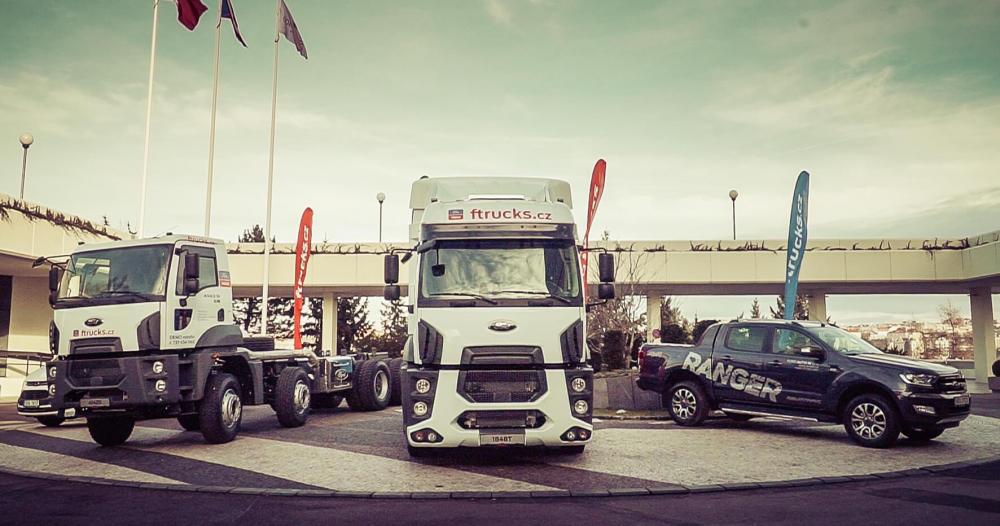
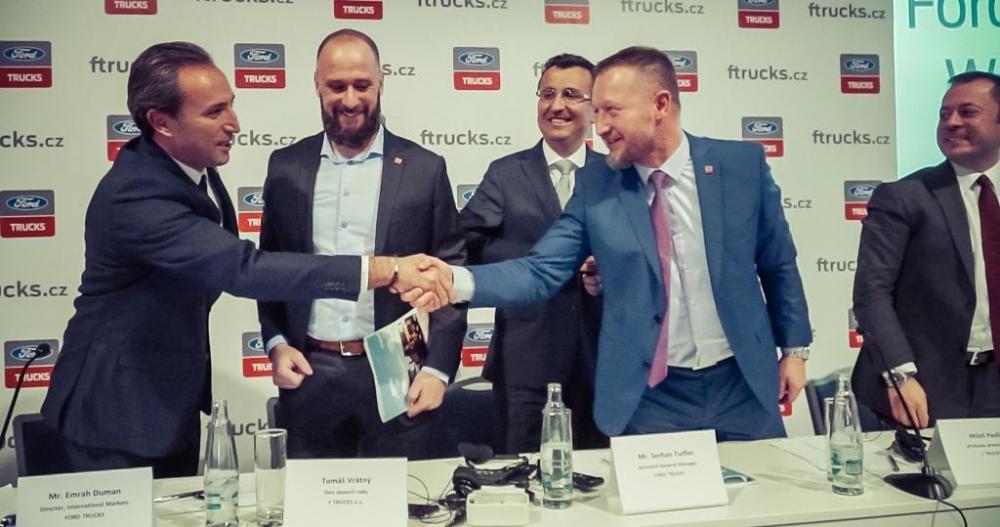
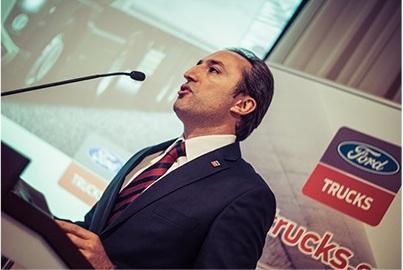
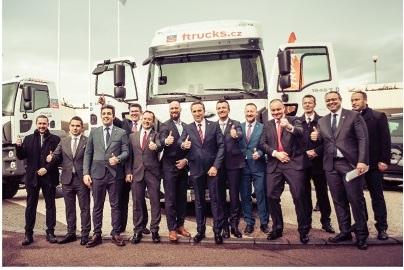
.jpg.e4b74db4b024c9482bba2b856b6d9034.jpg)
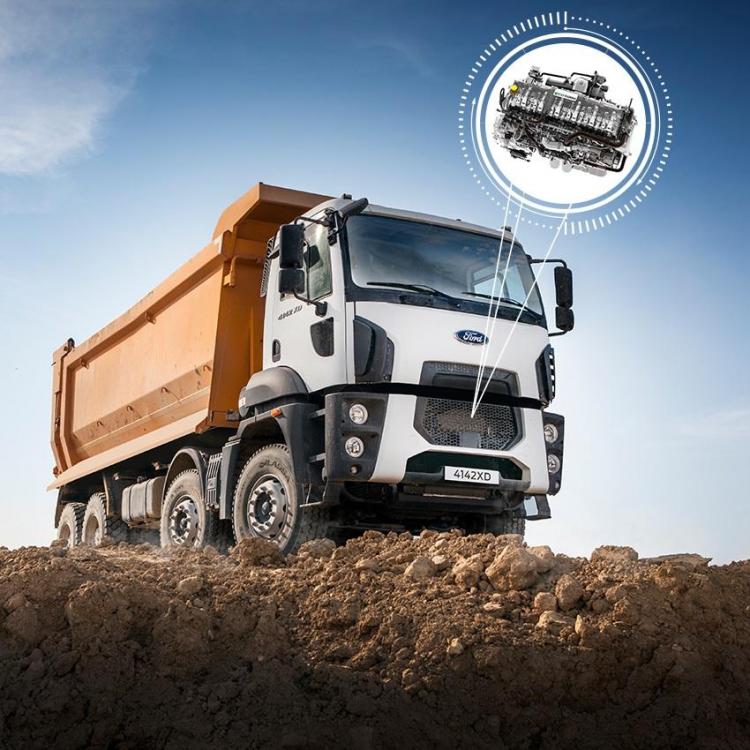
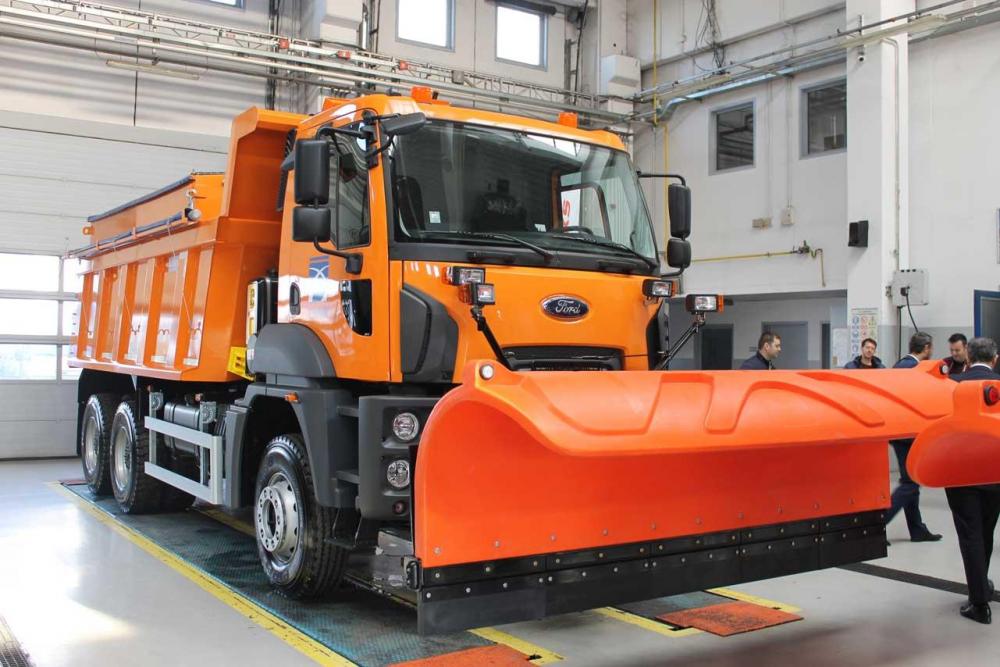
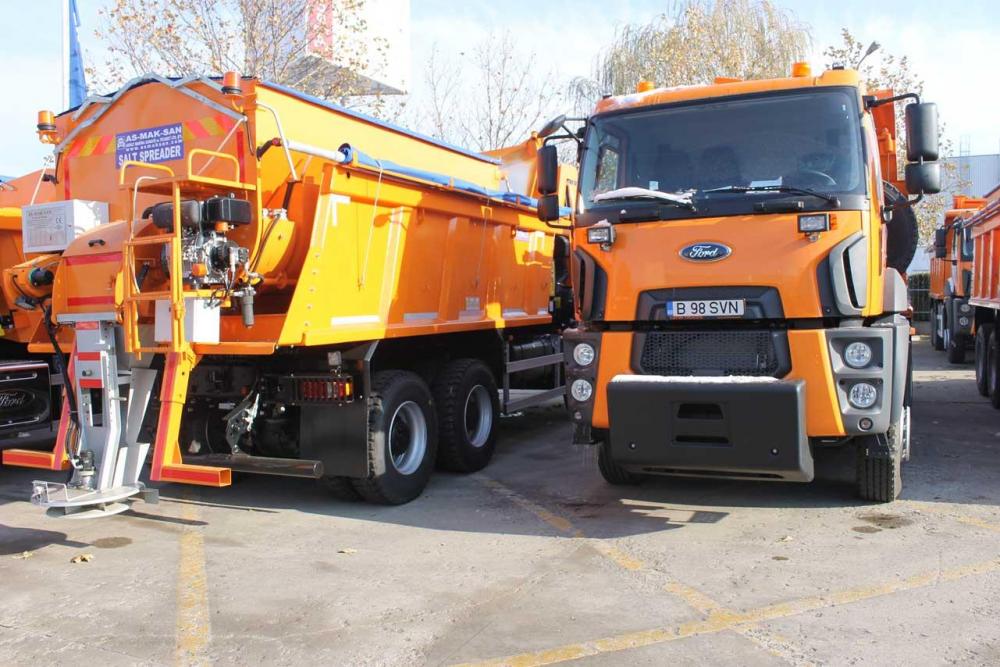
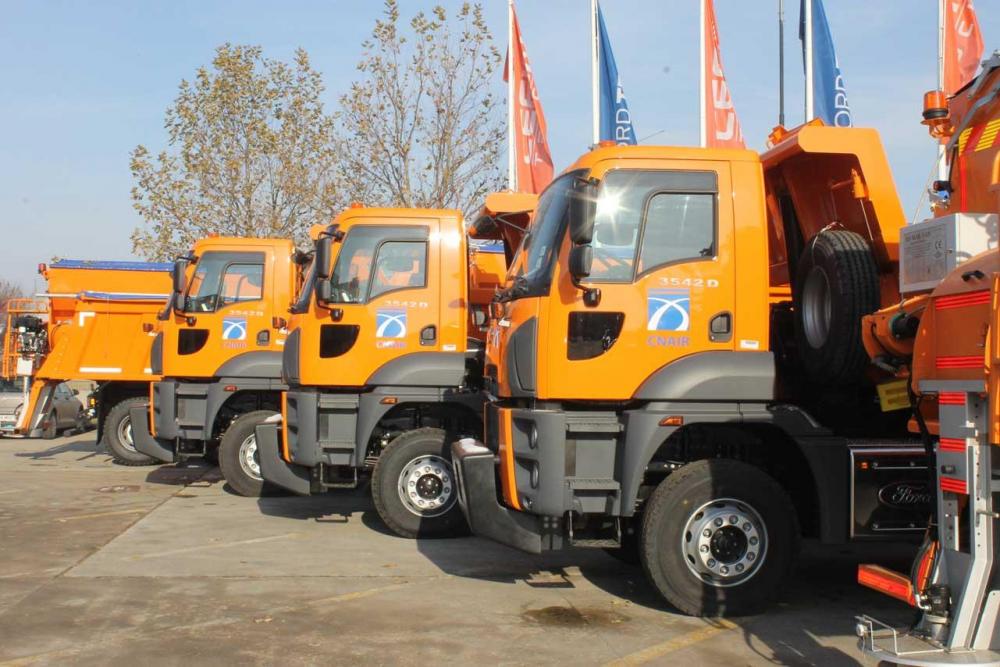

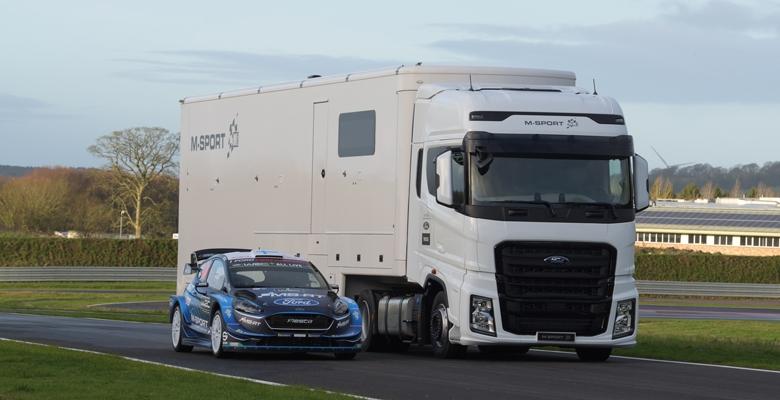
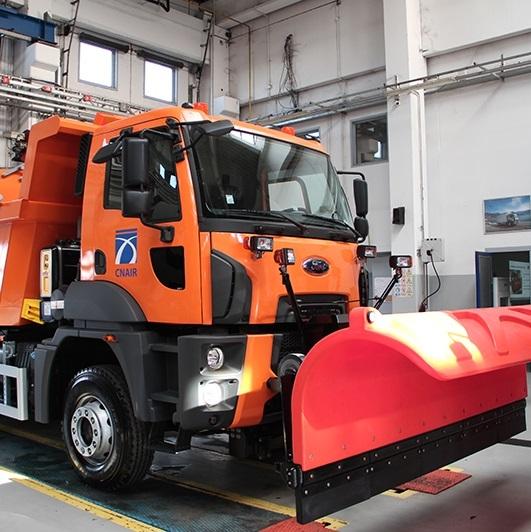
.jpg.a8c87d6280751397531572915aa612ba.jpg)
.jpg.82aa83ed6484b88ca5deb02b34d30f23.jpg)
